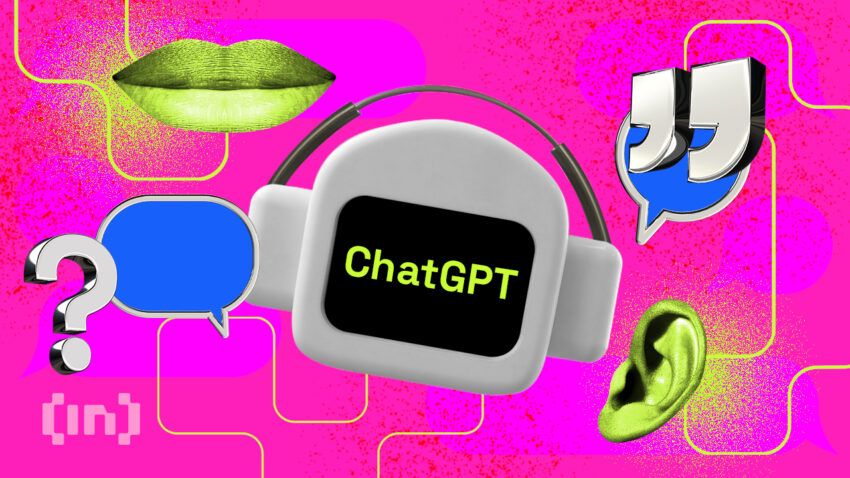This comprehensive ChatGPT review provides an in-depth look at the technology powering ChatGPT and its various use cases. Some view it as the beginning of a new frontier in technological evolution, while others see it as a glimpse of how artificial intelligence (AI) will revolutionize everything. This article will explore ChatGPT and assess whether it is a game-changer or a passing trend.
What is ChatGPT?
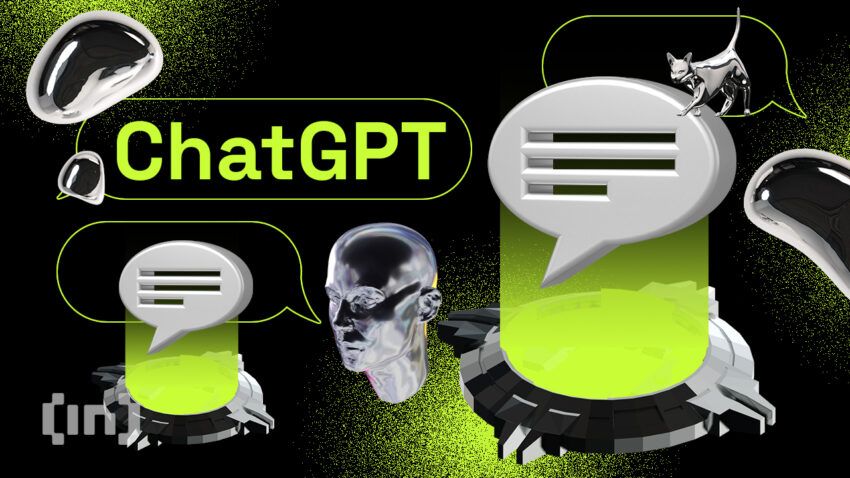
ChatGPT is a chatbot that can engage you in a conversation, just like a human would. It has been designed to understand your questions on various topics and provide detailed responses to those questions. The responses may not always be accurate, but the bot does a relatively good job of making it feel like you’re talking to a real person.
ChatGPT is a natural language processing (NLP) machine learning model. It uses Generative Pre-trained Transformer 3 (GPT-3), currently even GPT-4, one of the most sophisticated autoregressive language models, to produce human-like text. The screenshot below shows an example conversation between a user and the software:

ChatGPT has been optimized for contextual conversation using Reinforcement Learning with Human Feedback (RLHF). This method uses human demonstrations to nudge machine learning models toward the desired behavior. During training, the model learned from vast amounts of data from the Internet. The bulk of the data, including conversations, was authored by humans. This explains how ChatGPT can provide human-like responses, regardless of the conversation topic. The bot is able to adapt within a conversation thread.
Who created ChatGPT?
OpenAI, an AI research company based in San Francisco, is behind ChatGPT. Launched in 2015, OpenAI pitches itself as a state-of-the-art company dedicated to researching AI technology and various associated subdomains to benefit humanity. OpenAI was co-founded by Elon Musk and Sam Altman, among others. Altman, the company’s CEO, is an American entrepreneur, investor, programmer, and blogger. Musk resigned from the board in 2018, although he continues contributing financially.
OpenAI has many high-profile donors and investors, including Microsoft, which invested $1 billion in the company in 2019. Microsoft confirmed that its product, Team Premium, an upgraded collaboration and communication platform, integrates with ChatGPT. There are reports that the software giant plans to add ChatGPT’s chatbot technology to PowerPoint, Outlook, Word, and its entire product suite.
In addition to ChatGPT, OpenAI has developed GPT-4o, a more advanced version of its language model, released in May 2024. GPT-4o offers enhanced capabilities in understanding and generating human-like text, making it exceptionally powerful and versatile for various applications. This ongoing innovation highlights OpenAI’s commitment to pushing the boundaries of AI technology.
A quick history lesson in GPTs: From GPT to GPT-4
OpenAI introduced GPT-1 in 2018 and followed GPT-2 in 2019, focusing on 117 million and 1.5 billion parameters, respectively. ChatGPT, the AI application, officially launched in November 2022, although GPT-3 was already in use by 2020.
In January 2022, OpenAI released GPT-3.5, or InstructGPT, a safer version of GPT-3. Although it used the same data sets as GPT-3, InstructGPT included fine-tuning to improve safety and performance. In May 2024, OpenAI introduced GPT-4o, the latest model, which further enhances the capabilities and versatility of its language models.
Finally, OpenAI has released GPT-4o, a new and improved model to power the ambitious and era-defining ChatGPT, making it timely to review the history of GPT models. For those unfamiliar with GPT versions, they are the models that power OpenAI’s ChatGPT.

New features include multi-modal (image-capable) inputs and the ability to work with more data, multi-lingual capabilities, improved response accuracy, and more.
ChatGPT review: Usability
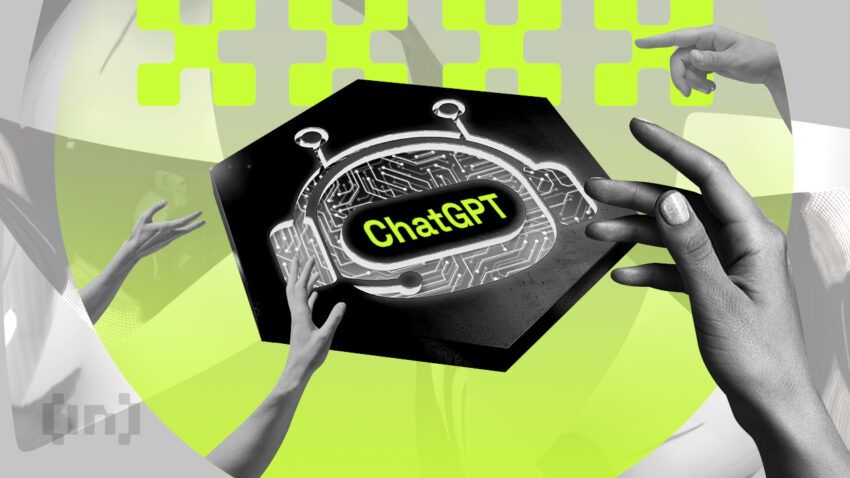
Using the chatbot is straightforward. Rather than covering the individual steps, this review focuses on the bots’ merits, limitations, and overall usability.
User interface and user experience
The user interface is simple and intuitive. It has minimal design elements and just a few buttons/options — nothing to confuse even the rookie technology user. In addition to the chat box, where you type in messages and receive replies, there is one button each for:
- Starting a new conversation with the AI
- Toggling between light and dark modes
- Logging out
- Accessing the ChatGPT FAQ page and Discord server
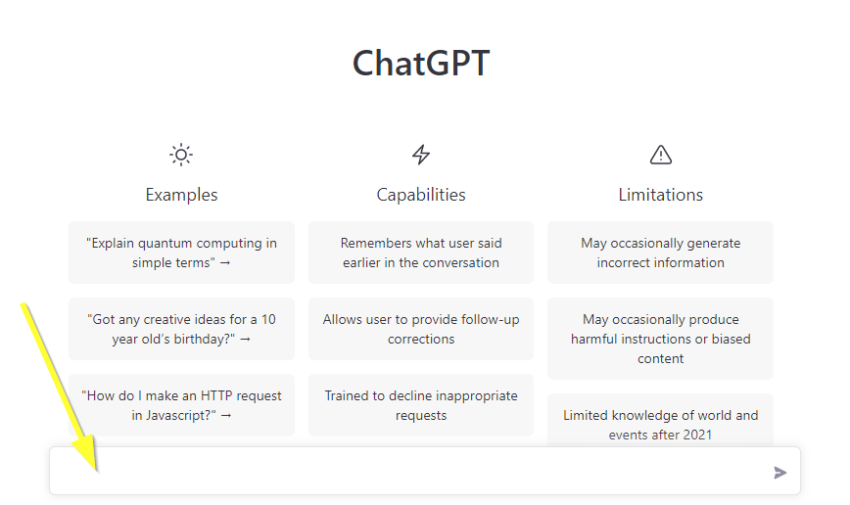
Interacting with the chatbot is also simple. You can type in a question or a message (see the yellow arrow in the picture above). Then, ChatGPT considers the questions and the relevant context before determining an appropriate response. Based on our experience testing the product so far, the chatbot takes a few seconds to respond (usually not more than 10 seconds).
Yet, in addition to reading this ChatGPT review, we urge you to try the interface in person. You will be amazed.
ChatGPT fees
ChatGPT offers various subscription plans to cater to different user needs, starting with the Free plan, which is ideal for individuals just starting out. This plan includes assistance with writing and problem-solving, access to GPT-3.5, and limited access to GPT-4o, as well as features such as data analysis, file uploads, vision, web browsing, and custom GPTs, all for no cost.
The Plus plan, priced at $20 per month, targets individuals looking to amplify their productivity. It provides early access to new features, access to GPT-4, GPT-4o, and GPT-3.5, up to five times more messages for GPT-4o, and enhanced access to data analysis, file uploads, vision, web browsing, and DALL·E image generation. Users can also create and use custom GPTs.
For fast-moving teams, the Team plan is available at $25 per user per month when billed annually or $30 per user per month when billed monthly. This plan includes everything in the Plus plan, with higher message limits on GPT-4 and GPT-4o. Tools like DALL·E grant users the ability to create and share GPTs within the workspace, an admin console for workspace management, and team data exclusion from training by default.
The Enterprise plan, designed for fast-paced companies looking to scale securely, includes all Team plan features. It offers unlimited, high-speed access to GPT-4 and GPT-4o, an expanded context window for longer inputs, enterprise data exclusion from training by default with custom data retention windows, admin controls, domain verification, analytics, and priority support with ongoing account management.
What can you do with the AI chatbot?

You can use ChatGPT in many ways if you keep the bot’s limitations in mind. So far, users have been exploring ChatGPT as a tool with which to compose music, understand complex topics, make jokes, write fiction, and even write/debug computer codes. Here are a few examples of what you can do with ChatGPT:
Write and debug code
Whether you are a seasoned programmer or just a beginner, you can ask ChatGPT to help you write code to solve a particular problem. You have to specify what programming language you want to write the code in — for example, Python, C++, or any other language. The AI software has limitations here, though. Users still have to check the code line by line and potentially debug it. So, it’s debatable whether the chatbot actually saves any time or effort here.
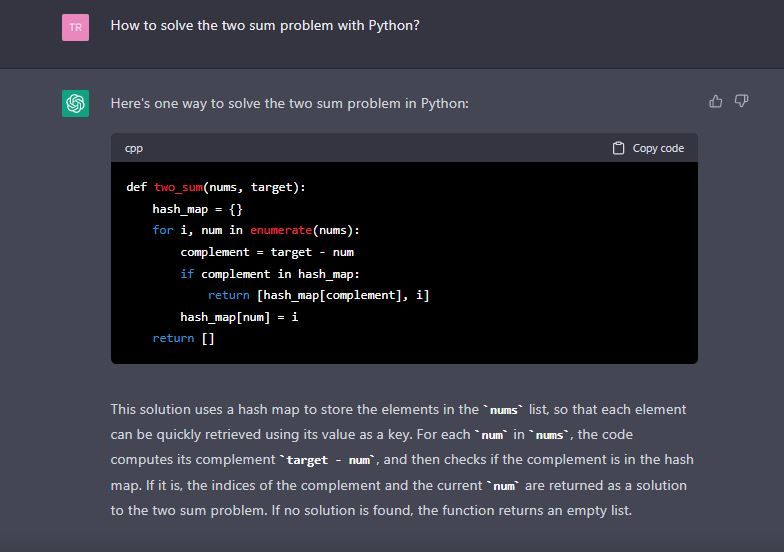
Even if you don’t want help writing your code, you could still ask ChatGPT to help debug it and spot vulnerabilities. The bot will also explain how to fix those vulnerabilities. However, as mentioned above, we’d be hesitant to trust ChatGPT to write and debug its own code.
Explain concepts
ChatGPT also comes in handy for learning about various topics from different disciplines. Science, history, linguistics, math, engineering — you name it. Want to learn how to fix a leaking pipe? Ask the AI chatbot for step-by-step instructions. Intrigued about what happens when two black holes collide? ChatGPT is just one question away. You can even ask the bot to help you with homework or assignments.
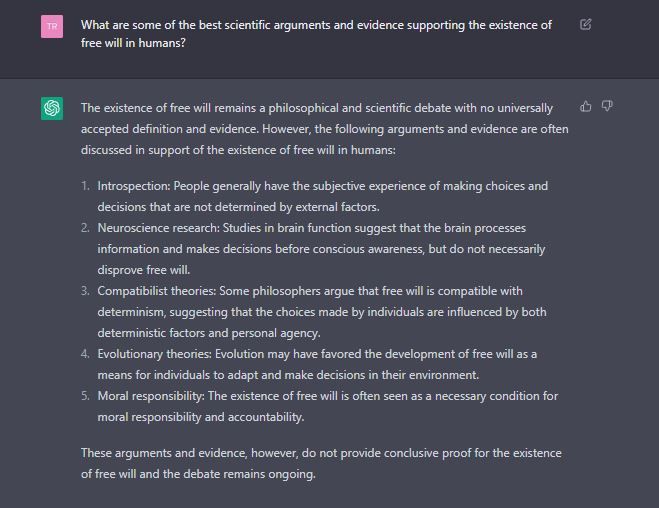
Brainstorm creative ideas
Need ideas for a new acoustic ballad? Ask ChatGPT to chip in with some cool chord progressions. Need a twist for a short story or a movie script? Ask ChatGPT and see whether you can build from one of its many ideas. Do be aware of lifting ideas straight from the AI bot, though: it doesn’t screen for plagiarism. We asked the bot to suggest plot ideas for a horror movie where Keanu Reeves plays the ghost of John Wick. This is the result:
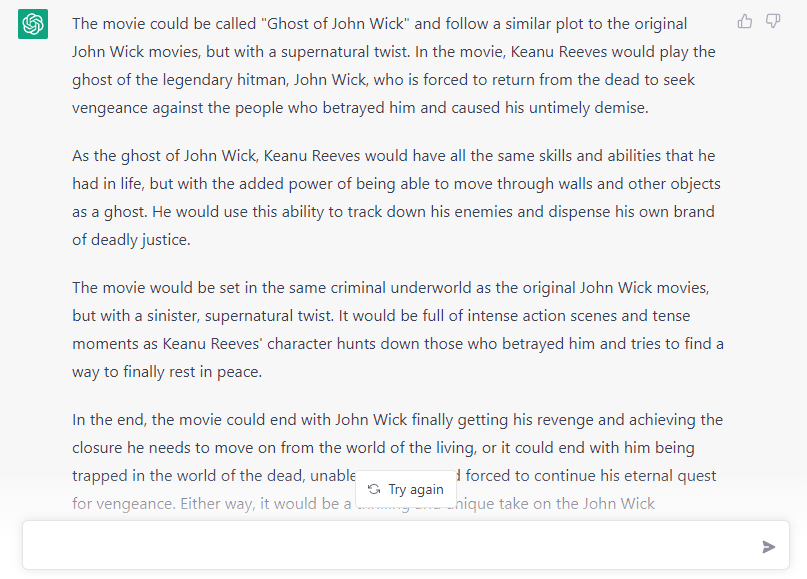
Excerpt data from texts
The bot can also help you extract data from huge volumes of text. All you have to do is feed the bot text and tell it what kind of data you want (and in what format).
In the example below, we fed the AI chatbot a sizable Wikipedia article on the Battle of Saraigat (1671). We asked it to extract important details from the article and prepare a summary. The chatbot did a decent job crunching all the information to highlight the key points about the historic event.

Automate customer support
Businesses already deploy chatbots to boost their customer support infrastructure. However, ChatGPT is more sophisticated than the average chatbot. As such, it may be able to help businesses deliver improved customer support experiences.
Examining ChatGPT’s limitations
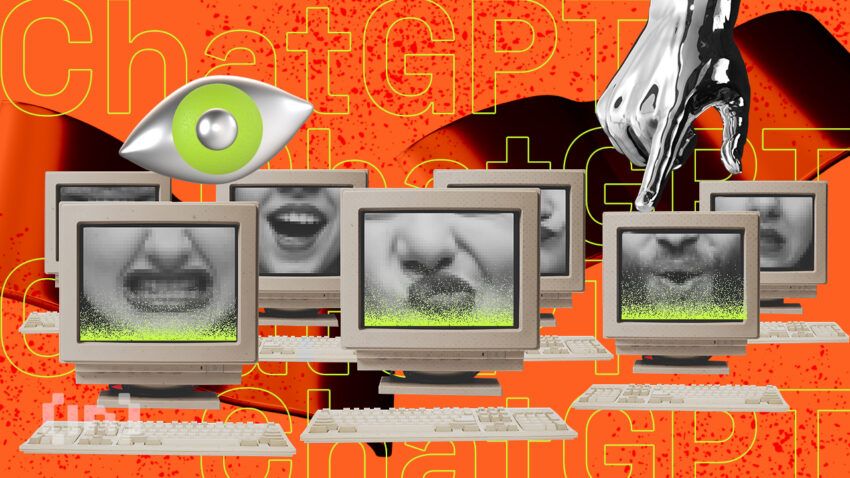
Is ChatGPT ushering in a new era in AI? While it may be a catalyst for innovation, it has its shortcomings, most notably fabricating facts. This issue, known as “stochastic parroting” or “hallucination,” is common among large language models (LLMs) like ChatGPT, which are trained to predict words without verifying factual accuracy. Despite its ability to make these fabrications sound plausible, this flaw poses a risk of spreading misinformation and fake news.
“Being designed by algorithms means ChatGPT replies are shaped by its training data. I cross-check facts with other sources to avoid spreading unintended misinformation.”
Puneet Gogia, Founder of Excel Champs: BeInCrypto interview
Moreover, ChatGPT is not infallible and can struggle with unusual queries due to the limitations of its algorithms. AI-generated content from ChatGPT is often highly organized and logical but needs more factual accuracy and insightful information. Additionally, its output tends to be verbose and devoid of idioms or metaphors, making it easy to identify as machine-generated rather than human-written.
OpenAI acknowledges ChatGPT shortcomings
OpenAI is transparent about what ChatGPT can and cannot do. The company’s CEO has acknowledged the chatbot’s limitations.
With these limitations in mind, ChatGPT is still being prepared to replace Google and other search engines. As a learning tool, it can be both useful and fun. However, you should not yet use ChatGPT as your single source of information. Because of these inaccuracies, some websites have banned users from sharing ChatGPT responses. One notable example to have taken such a measure is Stack Overflow. The Q&A site for coders and programmers prohibited using ChatGPT-generated text shortly after the chatbot’s launch.
ChatGPT review: Privacy
We recommend that all users read through OpenAI’s privacy policy and terms of use before using ChatGPT. OpenAI may review all your conversations with the AI chatbot. The company says these reviews are important to ensure safety and compliance with relevant laws and regulations. Furthermore, the conversations also help the company improve its systems.
ChatGPT is free when you use it. Remember the saying, “if something is free, then you’re the product?” Well, that might well be the case here, especially as some estimates expect the program to cost OpenAI up to $100,000 per day to run, or $3 million a month.
With that in mind, you shouldn’t share any sensitive information with the bot, as it may be visible to the company’s AI trainers. You may choose to delete your account and all associated data at any point by following the steps outlined here. However, you can not view your conversation history, and you cannot delete specific prompts.
ChatGPT review: Final verdict
Overall, this ChatGPT review can conclude that the AI chatbot is a promising new product with some serious potential. Of course, it is still a work in progress, even with GPT-4o in play, and there is much to prove with the later releases. Yet it’s already one, if not the most, advanced multi-utility AI chatbots. There are limitations around using the bot as a learning tool or a primary source of information, as the bot can fetch inaccurate info. Verifying the chatbot’s information with reliable secondary sources is vital. Will ChatGPT change the world into what it is today? No. But will future iterations of this high-powered bot be key future disruptors? We’d say there’s certainly a strong possibility.
Frequently asked questions
ChatGPT is an advanced AI language model developed by OpenAI that can generate human-like text based on the input it receives. It is used for various applications, including writing assistance, problem-solving, and conversation.
As of June 13, 2024, the latest ChatGPT model is GPT-4o, released on May 13, 2024. This model offers enhanced capabilities in understanding and generating human-like text, making it more powerful and versatile for various applications.
ChatGPT can be used for various purposes, including explaining complicated topics, composing music, curating recipes, suggesting ideas for a novel, and writing or debugging computer code. While it is a multifaceted tool, it has limitations, such as potential inaccuracies and a lack of plagiarism checking.
ChatGPT offers a free plan for users, providing access to basic features and limited use of advanced models. However, subscription plans, such as the Plus plan for $20 per month, offer enhanced capabilities and access to more advanced models like GPT-4o.
ChatGPT is owned by OpenAI, an artificial intelligence research company based in San Francisco. Elon Musk and Sam Altman co-founded OpenAI, although Musk resigned from the board in 2018.
Elon Musk and Sam Altman co-founded OpenAI. Altman, an American entrepreneur, investor, programmer, and blogger, is also the CEO. Musk resigned from the board in 2018, although he continues contributing financially.
ChatGPT uses Generative Pre-trained Transformer 3 (GPT-3), one of the most sophisticated autoregressive language models, to produce human-like text. It is a natural language processing (NLP) machine-learning model optimized for contextual conversation using Reinforcement Learning with Human Feedback (RLHF). This method uses human demonstrations to nudge machine learning models toward the desired behavior.
Yes. Using an API, you can integrate ChatGPT’s AI chatbot into a website or custom applications. OpenAI provides an API with a programmatic interface for interacting with the ChatGPT model. Developers can use the API to access the core functionality of ChatGPT and build custom applications, such as chatbots, language translators, and more.
No, ChatGPT can not independently review codes. It can answer specific questions about programming concepts and provide explanations. You can ask ChatGPT to help you write or debut codes to solve a particular problem. However, you still have to check the code line by line and potentially debug it.
No, ChatGPT can not independently help you review a legal contract. The interpretation and enforcement of contracts is a complex legal process that requires specialized knowledge, training, and experience. However, ChatGPT can help you draft a contract, assuming you have the legal expertise necessary to nudge the AI system in the right direction.
Disclaimer
In line with the Trust Project guidelines, the educational content on this website is offered in good faith and for general information purposes only. BeInCrypto prioritizes providing high-quality information, taking the time to research and create informative content for readers. While partners may reward the company with commissions for placements in articles, these commissions do not influence the unbiased, honest, and helpful content creation process. Any action taken by the reader based on this information is strictly at their own risk. Please note that our Terms and Conditions, Privacy Policy, and Disclaimers have been updated.


